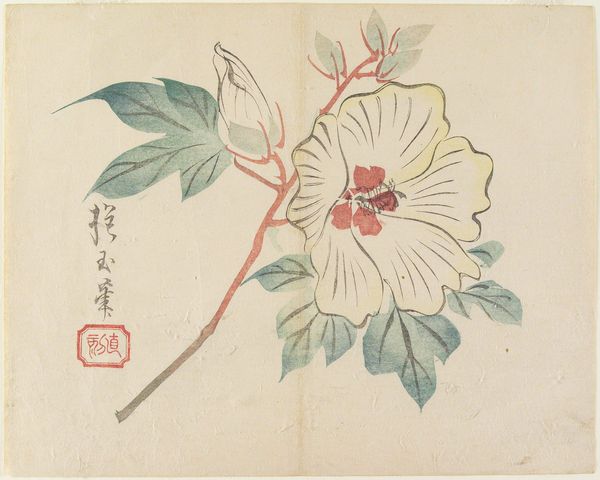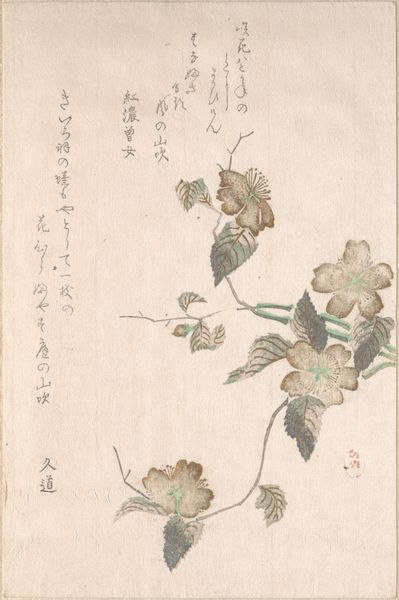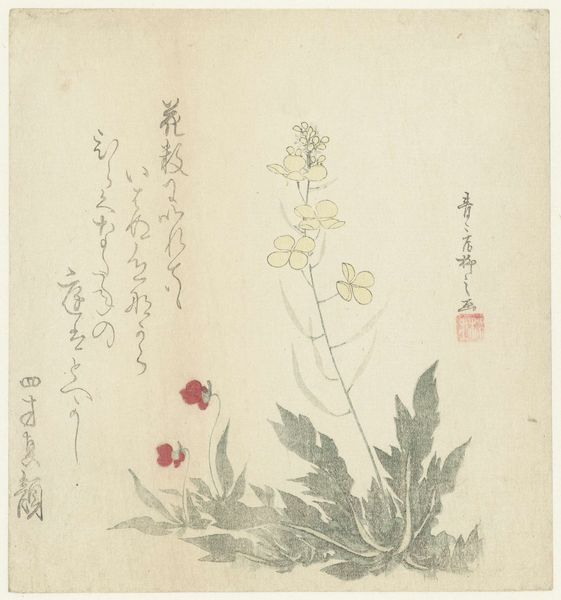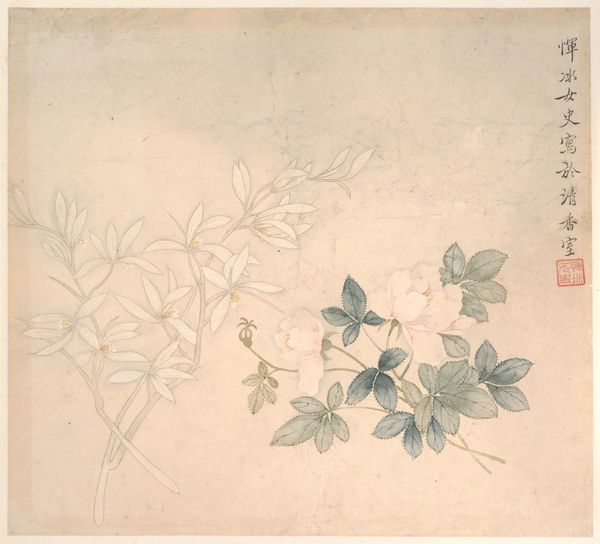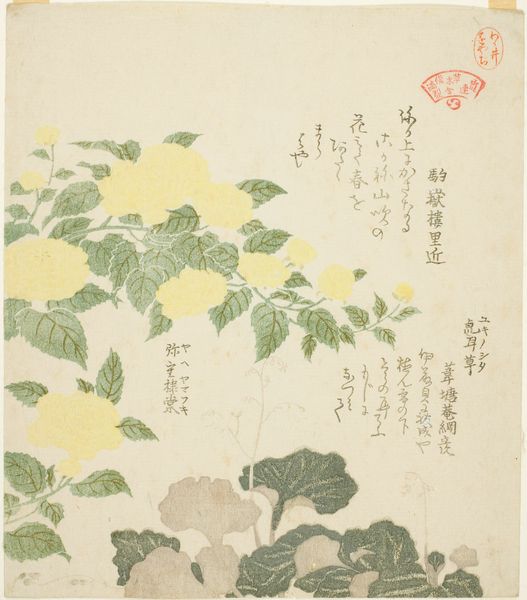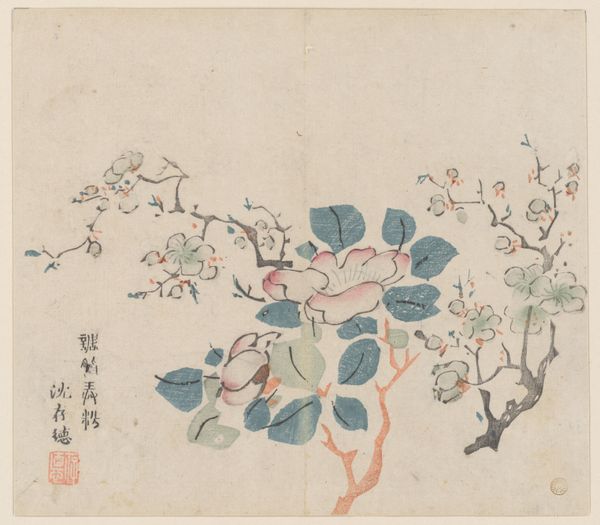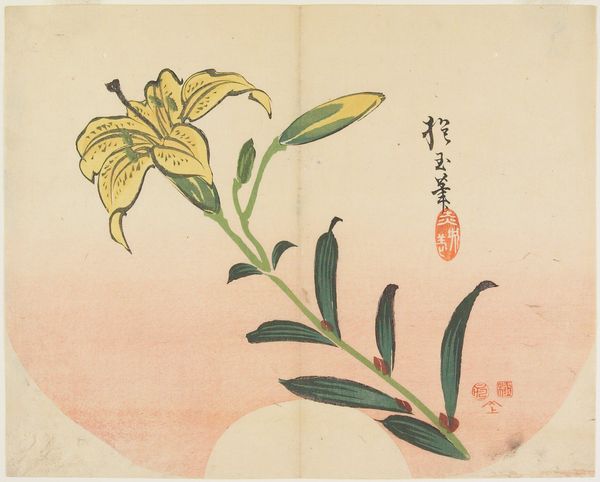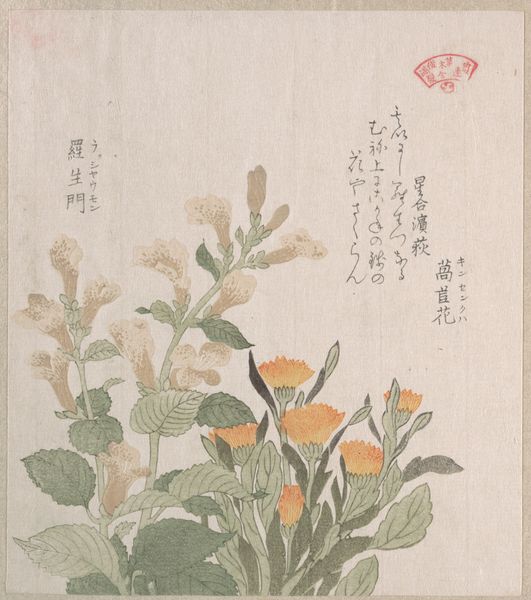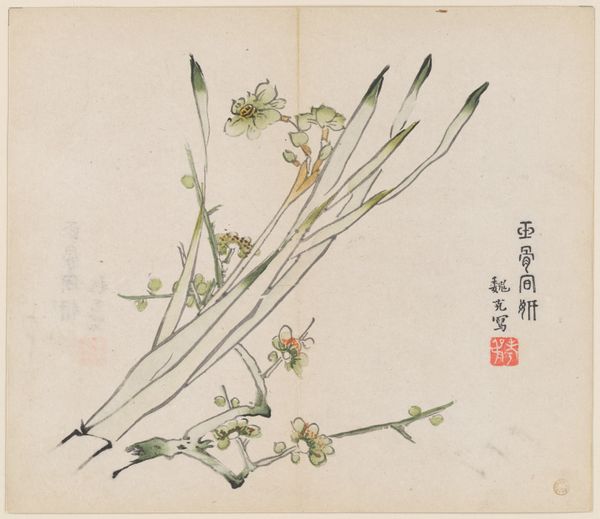
drawing, paper, ink
#
drawing
#
asian-art
#
ukiyo-e
#
paper
#
ink
#
botanical drawing
#
botanical art
#
watercolor
Dimensions: height 205 mm, width 294 mm
Copyright: Rijks Museum: Open Domain
Editor: This is “Schetsblad met malve,” or “Sketch Sheet with Mallow,” a drawing with ink and watercolor on paper by Ishikawa Kazan, made sometime between 1800 and 1900. It’s… charming! Kind of feels like flipping through a naturalist’s notebook. What do you see in this piece? Curator: Well, at first glance, the mallow itself is strikingly presented. The large bloom is dominant, demanding our attention with its open face. But what resonates deeper are the multiple, fragmented images around it, almost like glyphs hinting at various stages of the plant’s life cycle. Consider this against the backdrop of Japonisme. What emotional chord does this strike in you? Editor: It feels both scientific and deeply personal, I guess? The sketches suggest observation, but also maybe affection. Is that stretching it? Curator: Not at all! Look closer. Notice how the artist has juxtaposed the fully realised flower with more tentative outlines? This echoes a key tenet of Japanese aesthetics: imperfection as a path to spiritual enlightenment. Think about how this might connect to cultural ideas about time and impermanence. Editor: So, like, seeing beauty in the fleeting nature of the flower, captured in different stages? Curator: Precisely. And beyond just seeing, reflecting. The calligraphic notations surrounding the sketches… those are not merely labels. They function almost as a commentary, deepening the narrative beyond simple botanical illustration. Editor: That adds so much depth! It’s more than just a drawing of a flower. Curator: It is an attempt to freeze a single moment of contemplation into material form and use the flower as a proxy to engage with the world in its complex, beautiful unfolding. We witness this happening on a microcosmic scale and invites the audience to mirror the process on the larger scope. What do you take away from experiencing Kazan’s perspective on beauty? Editor: I see now it’s more about observing and feeling. I really hadn't considered how symbolic the fragmented style can be. Thank you! Curator: My pleasure. These "fragments" serve to enhance one's understanding of beauty.
Comments
No comments
Be the first to comment and join the conversation on the ultimate creative platform.
